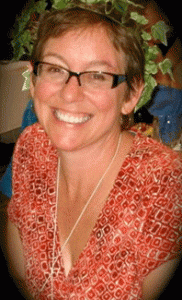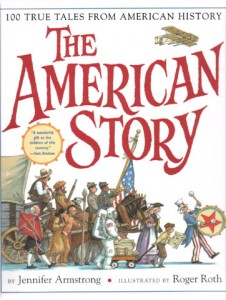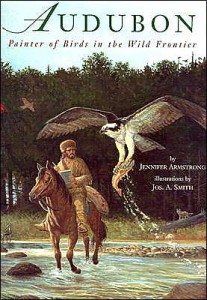 Jennifer Armstrong is an American author who has written more than 100 books of fiction and nonfiction for all ages, from pre-school through young adult. She was born in 1961 in Waltham, Massachusetts, and grew up in South Salem, New York but now lives and writes in Saratoga Springs. In 2003 she went to the South Pole. In this interview, Jennifer talks about her books, her love for history, her journey to the South Pole, reading and writing.
Jennifer Armstrong is an American author who has written more than 100 books of fiction and nonfiction for all ages, from pre-school through young adult. She was born in 1961 in Waltham, Massachusetts, and grew up in South Salem, New York but now lives and writes in Saratoga Springs. In 2003 she went to the South Pole. In this interview, Jennifer talks about her books, her love for history, her journey to the South Pole, reading and writing.
Voicu Mihnea Simandan: You have been a story writer for most of your life. How has your writing evolved over time?
Jennifer Armstrong: My writing has evolved in a variety of ways, as my interests have deepened or changed, or my life experiences have taught me something about my audience. Because I adopted an 8-year-old child from a faraway country, and had to teach her English, I have been very much more interested in clarity, and avoiding ambiguity in my writing. There was a time when I liked ambiguity – writing that was closer to poetry. But now I cherish clarity most of all.
VMS: Illustrations are a very important factor in any children’s books. Your massive book The American Story: 100 True Tales from American History (2005) is a captivating read, but it wouldn’t have been as good as it is without Roger Roth’s illustrations. What was your work relationship with the illustrator?
JA: My relationship with Roger Roth on The American Story was similar to my relationship with any illustrator who works on one of my books. The relationship exists between my text and the illustrator, with the editor as intermediary. It’s not expected (or desired) that the illustrator and I should speak directly. It’s not for me to say how the illustrator will visualize my stories. I usually see sketches, but only so that I can check for factual errors. In illustrating historical material this is really important, and it sometimes happens that I catch something that isn’t correct or appropriate. But as for the style, composition, execution or anything related to the art itself, my feedback is not sought, nor do I wish to give it. I see illustrated books as the work of two people doing what they do best, not two people with one telling the other what to do or how to do it. With this book, as with several others, I met the illustrator after the book was finished – for publicity events or library conferences, or similar occasions.
 VMS: You believe that “History isn’t dusty facts. History is stories – stories about people who came before us.” How important is it for children these days to be aware not only of their own history, but also of what’s happening around the world?
VMS: You believe that “History isn’t dusty facts. History is stories – stories about people who came before us.” How important is it for children these days to be aware not only of their own history, but also of what’s happening around the world?
JA: I think children need to know about the world around them as never before. American children are especially short-sighted this way, largely because the steady drumbeat of American exceptionalism that runs through our culture informs them that the rest of the world is irrelevant. I’m always amazed at how many people in other countries know about the United States, speak fluent English, and are conversant with much of our history, while so many Americans know no second language, seldom travel where they need a passport, and cannot identify other countries on a map. The world is getting smaller and smaller – we hear that all the time – and our kids can’t afford to remain ignorant of the rest of the world.
VMS: Where did the ideas for your book on the American naturalist, Audubon: Painter of Birds in the Wild Frontier (2003), come from?
JA: Audubon was a fascinating character. I have read a fair amount about the early naturalists in North America. I find their lives very interesting for a variety of reasons – scientific, cultural, historical – and he was one of the most colorful of them.
VMS: You’ve also branched out from picture books to easy readers, chapter books, young adult novels, and nonfiction. How did you find the transition?
JA: The transition from one sort of book to another seems very natural to me. I read many kinds of books – fiction, nonfiction, poetry, children’s, adults’, teens’ – and so I find it pretty straightforward to write many kinds as well. I don’t find it particularly difficult.
VMS: Do you employ similar skills when writing books targeted for an older readership?
JA: I think the skills used at all levels are basically the same – to communicate clearly, and with some style. The reading and developmental level of the audience may dictate the vocabulary, complexity of sentences, and sophistication of ideas, but fundamentally it’s all about communicating in a way that delights and informs.
VMS: In 1999, five women travelled to Antarctica and, Caroline Hamilton, the team leader, recorded their struggles and victories in To The Pole: Five Women in Search of an Adventure (2000). What motivated you to go to the South Pole in the year of 2003?
JA: I went to the South Pole on a grant from the National Science Foundation, which hosts a handful of authors, artists, musicians, filmmakers and other creative types each year for a trip to Antarctica. I had received a lot of attention for my Shackleton book, and I found that I wanted to be able to say I had been there too!
VMS: What was the most challenging thing you have encountered on your journey to the South Pole?
JA: The most difficult thing about my trip to the Pole (and by the way, I didn’t trek or ski or anything arduous, I went in a plane) was that there is almost no color in Antarctica. No plants, very few animals. It’s very monotonous visually! And at the South Pole Base it feels a little bit like being in a high tech prison – it’s all very comfortable but you can’t go anywhere!
 VMS: Some people believe that children no longer read and, with the availability of affordable e-readers, many believe that, sooner or later, children will no longer want to hold books in their hands. Please comment.
VMS: Some people believe that children no longer read and, with the availability of affordable e-readers, many believe that, sooner or later, children will no longer want to hold books in their hands. Please comment.
JA: I don’t know if children will still want to read. People made dire predictions about the same thing when audio books came out. I think there will always be an audience for all forms of books – and after all, children are most likely to do what they see their parents do. If parents continue to read and enjoy physical books, and their kids see them do that, I believe kids will continue to read physical books along with all other formats – electronic and audio.
VMS: You are very active online and maintain an excellent blog and website. How important is it for writers these days to be “out there” on the Internet, interacting with their fans?
JA: It’s hard to know what the effect of an on-line presence is. My Lion’s Whiskers website is speaking to a very different audience than my personal website. My personal website is helpful for connecting with schools and libraries who want me to visit them, and perhaps students are also using it while writing author reports. I don’t really know. Some authors work the web pretty effectively. What it all leads to is different from author to author, I think.
VMS: You’ve been on a few school visits. What were some of the highlights of these visits?
JA: I haven’t been on any school visits since the spring, but highlights of every school visit are the kids whose questions about writing reveal that they, too, hope to become authors when they grow up. Often they are too shy about it to say it directly, but their questions usually imply that they do!
VMS: Do you still read children’s books and young adult fiction?
JA: Yes, I do read children’s and teen books, although these days I mostly am reading traditional folklore and mythology to find material for my Lion’s Whiskers blog.
VMS: What book are you working on right now?
JA: I’m working on a Lion’s Whiskers book, about parenting, and the importance of story to help children develop courage for all the challenges they face now and in the future.
VMS: What is your writing routine?
JA: I usually write in the morning. I spend a lot of time reading, too.
VMS: What advice would you give to aspiring writers?
JA: My advice to aspiring writers is to write what they like, and not follow trends. If they like vampires, okay, go ahead and write about vampires. But the original writers are those who write about things we haven’t read before. My second piece of advice is to be a strict editor but a gentle critic. That means work hard to craft something that is your best work, but don’t berate yourself because it’s not as good as X or Y famous author. Skill can be acquired with diligent practice.
VMS: Thank you for your time.
JA: You are welcome!
Listen to Jennifer talking about school visits:
Voicu Mihnea Simandan
Bangkok, Thailand
November 3, 2011

